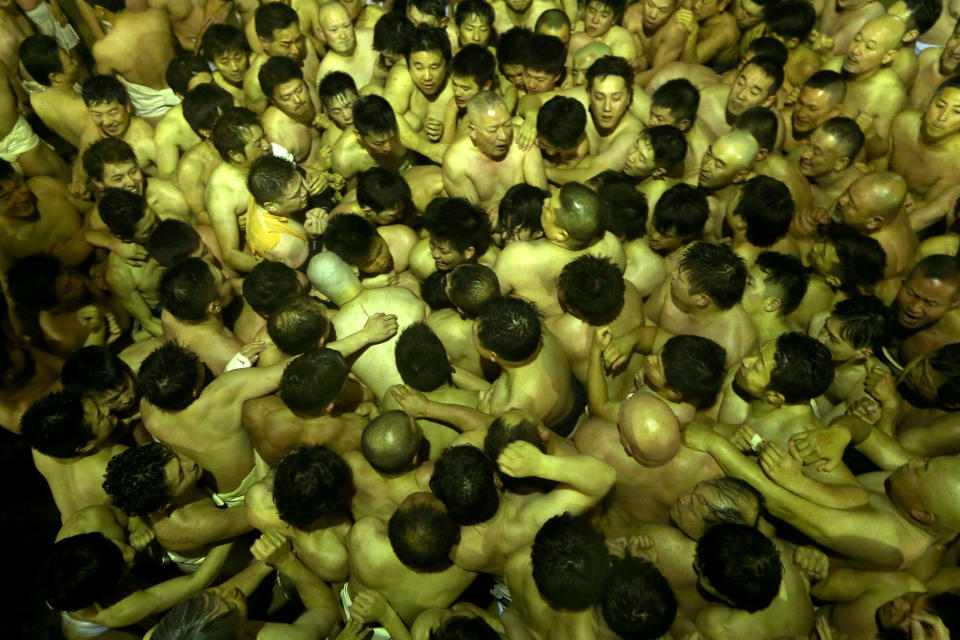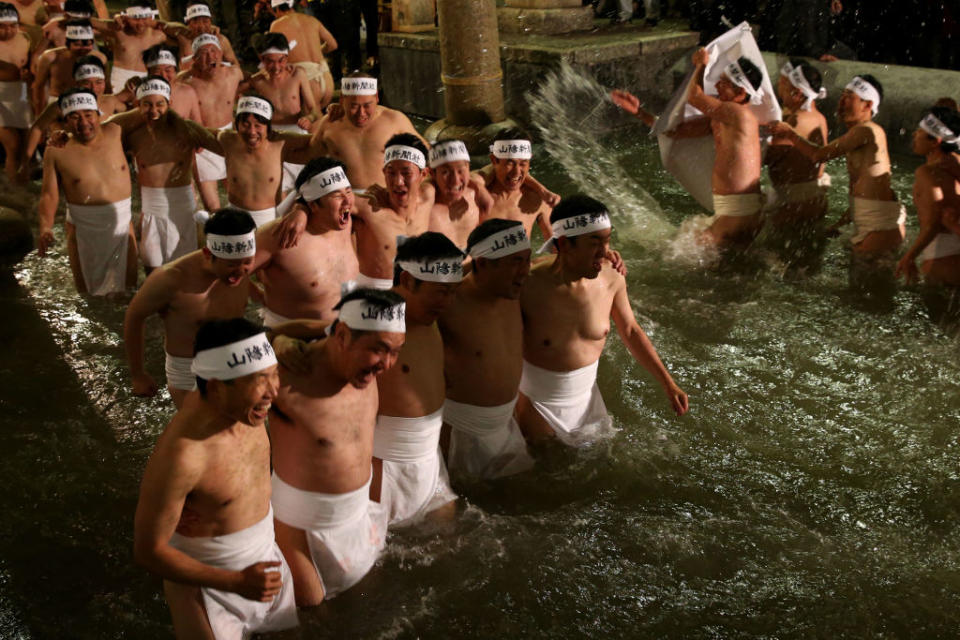Thousands of men take part in Japan's nudity festival: What is Hadaka Matsuri?
Ten thousand men have taken part in Hadaka Matsuri, the annual naked festival on Japan’s Honshu Island.
The men compete to become “luckiest of the year” in a celebration of prosperity and fertility which includes plunging themselves in ice water and fighting to grab a sacred object, which is often a stick known as a shingi.

Although Hadaka Matsuri translates to nudity festival, the men aren’t entirely naked.
They’re often dressed in short loin cloths, known as fundoshi as they battle it out for good fortune.
Read more: The seven art and architecture wonders of Chicago
The origins of Hadaka Matsuri
The 500-year old religious event takes place at Saidaiji Kannonin Temple, 30 minutes from Okayama City, although smaller versions of the event take place all over Japan.
It’s the largest nudist festival in the country, which sees around 10,000 men compete each year.
It takes place in the winter, which makes the physically demanding event even more challenging - particularly as the men are expected to plunge themselves in cold water for between 1 and 2 hours to purify their souls.
Shinto priests throw blessed shingi into the crowd and the men fight to grab one, legend suggests that it will give them good fortune in the year ahead.
Read more: 2020’s cheapest holiday destinations revealed
What happens at the event?
The men will start with a 1-2 hour long ice bath, said to purify them. This is no easy feat in the depths of winter.
This is followed by a fight to grab sacred objects which are thrown into the crowd by priests. The aim is to grab one of the sticks and keep hold of it.
Hadaka Matsuri has become a real spectacle which attracts thousands of onlookers annually. There are food and drinks stands with much of the event now ticketed. In fact, it’s recommended that you purchase a ticket prior to the event for the best (and safest) views.
It lasts for 30 minutes, during which time two types of sacred objects will be thrown into the crowd; the shingi and the less-sacred twigs - which can be taken home after the event.
Surprisingly, there’s not often any major injuries at the event, aside from the expected cuts and bruises.

Why are the men naked?
The reason for the nudity is quite a practical one; it’s easier to fight for the much-desired sticks if they’re not wearing at clothes.
At least, that’s what Mieko Itano of the Okayama tourist board told CNN.
However, there might be other reasons for the nudity - given that there’s more than one naked festival per year in Japan.
It’s believed that thousands of years ago Japanese people thought that nudity could drive away evil. In villages plagued with bad fortune, they would nominate a shin-otoko (divine man) who would walk through the village naked.
He would then be banished from the village in the hope that he would take all of their bad luck with him.
Read more: The insider’s guide to Margate
How has the festival evolved over the years?
Men used to compete to grab paper talismans but this has evolved over the years. This is mainly because the paper ripped too easily as the festival grew in size.
They eventually swapped the paper for wood, but that’s not the only change we’ve seen over the years.
Nowadays, men are more likely to compete in teams, be it a group of friends or work colleagues. Similar to physically challenging events that take place in the UK, the Hadaka Matsuri is a good platform for co-worker bonding.
This year’s event also featured hand sanitiser in a bid to stop the spread of the coronavirus.



